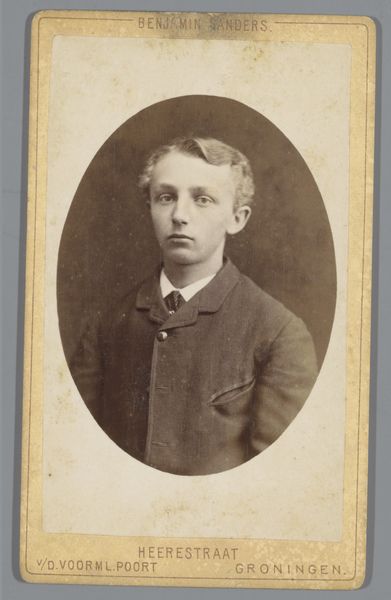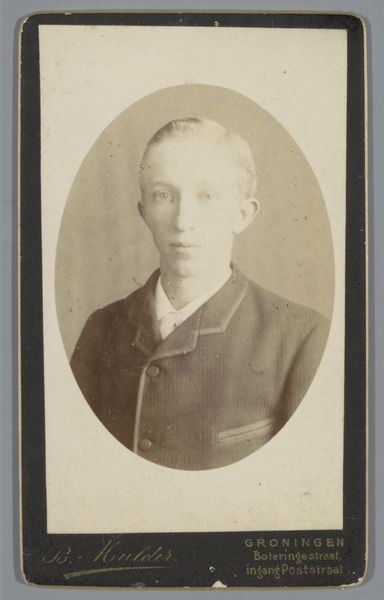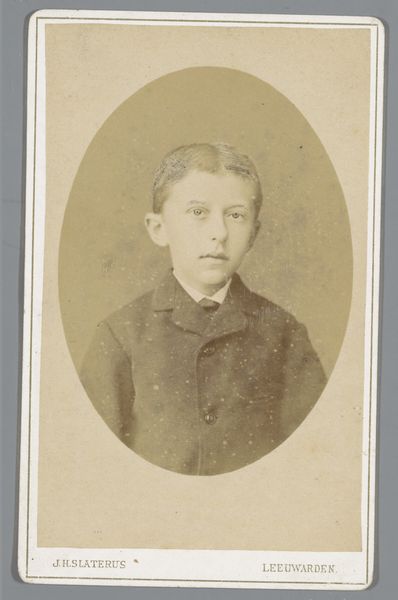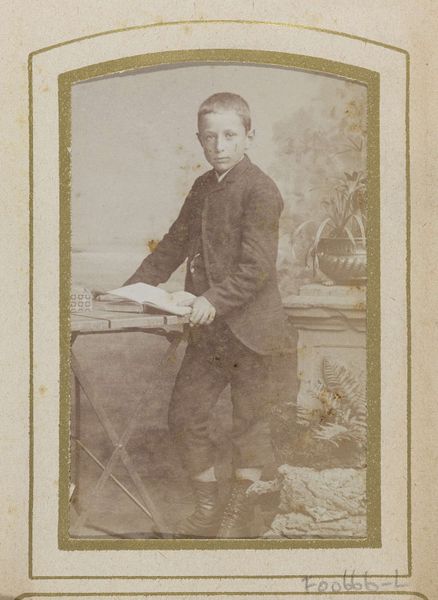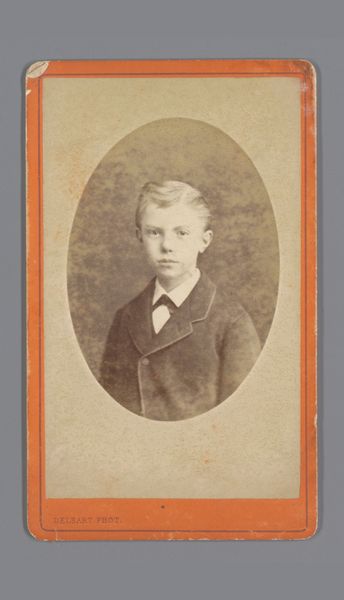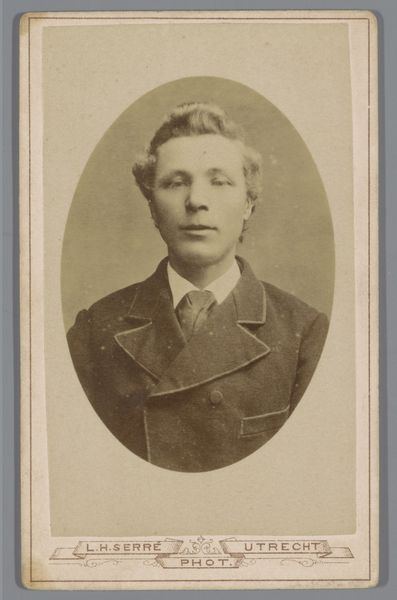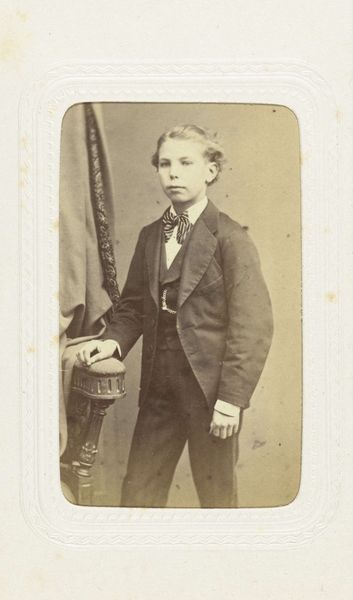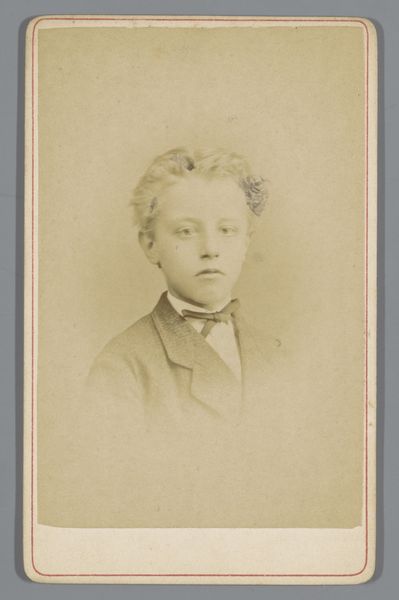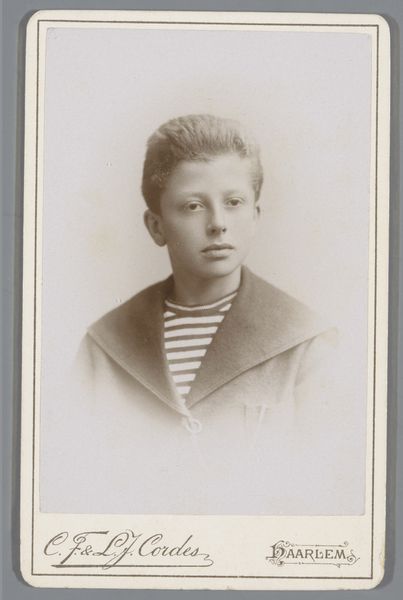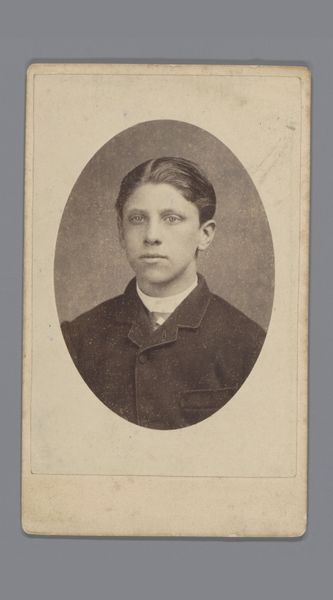
paper, photography, albumen-print
#
portrait
#
paper
#
photography
#
historical fashion
#
albumen-print
Dimensions: height 106 mm, width 65 mm
Copyright: Rijks Museum: Open Domain
Curator: The work before us, "Portret van Herman Derk Boerma, genoemd Harm", presents a window into late 19th-century Dutch society through the lens of Friedrich Julius von Kolkow's camera. Dating from 1879 to 1884, it is an albumen print on paper. Editor: There's something incredibly arresting about this portrait; its oval shape is strangely distancing yet focuses on the face of the young man. Curator: Albumen prints were prevalent, indicative of photography's rising accessibility and function in portraiture. This photograph speaks to a desire within the rising middle classes to emulate the portraiture traditions of the aristocracy. Consider the pose, the considered neutrality, and his clothes. This attire would reflect on the image the family would want the world to see. Editor: Absolutely. And the monochrome palette—muted sepia tones—amplifies the solemnity. Notice how the light catches the high points on the boy's face and his rather unruly hair; a softer presentation in contrast to the formality. Curator: The societal values placed on presenting a respectable image are also important. Photography served as a form of social currency. These prints were affordable relative to painting. They offered a medium for self-representation, even control. Editor: The surface is marked; look at the tiny imperfections. Do they reveal aging? Wear? I wonder how they transform or shift its significance. Is there an allegory in that decomposition? Curator: An interesting speculation that may be plausible as photographic decay relates to larger understandings of vanitas and change within our cultural lives. Editor: Reflecting on the tonal range, its careful rendering of detail versus our era of hyper-crisp digital pictures is so fascinating. What was being sought with that technique and aesthetic? The portrait has become almost ethereal despite its grounded reality. Curator: Understanding the photograph and how its cultural purpose shaped and was shaped by late 19th century Dutch middle-class self-perception expands the historical perspective, doesn't it? Editor: It does! It feels we are almost gazing backward through the lenses, past layers of time and intentional craft.
Comments
No comments
Be the first to comment and join the conversation on the ultimate creative platform.
